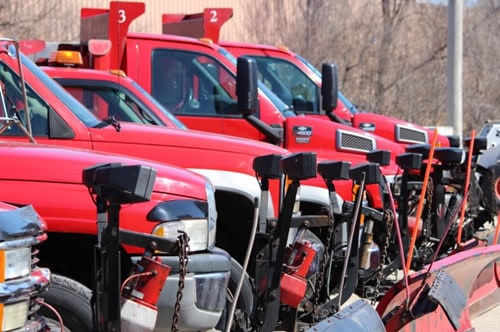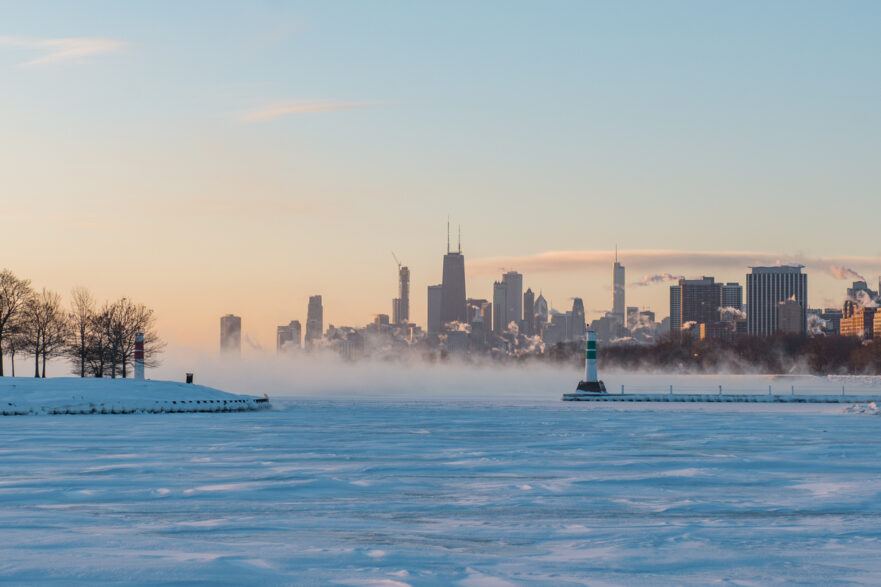Chicago, a vibrant metropolis nestled on the southwestern shore of Lake Michigan, is known by many names—the City of Big Shoulders, the Second City, and, most famously, the Windy City. At Brancato Snow & Ice Management, we think and write a lot about Chicago weather. We thought that this nickname may have piqued your curiosity as much as it has ours. It has led to various theories and explanations. In this article, we will delve into the origins of Chicago’s moniker, exploring both historical and meteorological perspectives.
Historical Origins of “The Windy City”
The phrase “The Windy City” is widely believed to have been coined in the late 19th century. Contrary to popular belief, it was not initially a reference to the city’s weather. Instead, it was a term used by journalists and politicians to describe the boastful nature of Chicagoans, particularly in the context of the city’s bid to host the 1893 World’s Columbian Exposition.
The Exaggeration Theory
One of the most prominent theories suggests that the nickname was popularized by Charles A. Dana, editor of the New York Sun. Dana purportedly used the term “Windy City” in the early 1890s to mock the long-winded and boastful politicians of Chicago who were aggressively promoting their city as the ideal location for the World’s Fair. Dana’s usage was meant to highlight the “hot air” and bluster coming from Chicago’s boosters, rather than the actual windiness of the city.
The Rivalry with Cincinnati
Another historical explanation points to the fierce rivalry between Chicago and Cincinnati. In the late 19th century, both cities were vying for economic dominance in the Midwest. Cincinnati’s newspapers allegedly referred to Chicago as the “Windy City” to emphasize what they perceived as its braggadocio and overinflated self-image. This rivalry fueled the spread of the nickname, reinforcing the notion that it was more about rhetoric than weather.
Early Literary References
Literary references to Chicago as a windy city date back even earlier. An 1858 edition of the Chicago Tribune mentioned Chicago as “a windy city.” This predates the World’s Fair bid and suggests that the term was already in use to some extent. The context, however, remains ambiguous—whether it referred to the weather or the boastful nature of its residents is unclear.
Meteorological Perspective
While historical anecdotes provide colorful origins for the nickname, the literal interpretation also holds some validity. Chicago’s geographic location and weather patterns contribute to its reputation for windy conditions.
Chicago’s proximity to Lake Michigan plays a significant role in its wind patterns. The large body of water creates a temperature differential between the land and the lake, particularly during spring and autumn. This differential can cause significant wind gusts, especially as cooler lake air meets warmer land air. The result is a breeze that can be quite strong and persistent.
The Windy Stats
Chicago experiences various wind patterns due to its location in the Midwestern United States. The city lies at a crossroads of several major air currents, including the jet stream, which can bring strong winds from the west. Additionally, Chicago’s relatively flat terrain allows winds to sweep through with less obstruction, further contributing to its breezy conditions.
Despite its reputation, Chicago is not the windiest city in the United States. According to data from the National Climatic Data Center, other cities like Boston and Oklahoma City experience higher average wind speeds. However, Chicago’s wind speeds are significant enough to reinforce the literal aspect of its “Windy City” nickname. On average, Chicago experiences wind speeds of about 10.3 miles per hour, which is substantial but not the highest in the nation.
Impact of the Windy City Nickname on Culture and Architecture
The nickname “The Windy City” has transcended its historical origins to become a defining characteristic of Chicago’s identity. It reflects not only the city’s weather but also its cultural and social dynamism.
Chicago’s architectural landscape has been shaped by its windy conditions. The city is home to some of the tallest skyscrapers in the world, and engineers have had to account for wind loads in their designs. The iconic Willis Tower (formerly Sears Tower) and the John Hancock Center are prime examples of structures built to withstand the city’s gusty conditions.
Literature, Art, and Sports and the Windy City
The nickname has also permeated the world of sports. Chicago is home to several major sports teams, including the Chicago Bulls, Bears, and Cubs. The windy conditions at Wrigley Field, home of the Cubs, are notorious for affecting the trajectory of baseballs, making games there particularly challenging and unpredictable.
Chicago’s windy reputation has also influenced its literary and artistic output. The city has been a muse for countless writers, poets, and artists who have drawn inspiration from its dynamic environment. The nickname encapsulates the spirit of Chicago—a city that is always in motion, constantly evolving, and full of life.
Modern Interpretations and Misconceptions
While the historical and meteorological explanations provide a comprehensive understanding of why Chicago is called the “Windy City,” modern interpretations often simplify or misinterpret the origins.
A common misconception is that Chicago is the windiest city in the United States. As mentioned earlier, this is not the case, though it does experience significant winds. The nickname’s original intent—highlighting the boastful nature of its residents—has often been overshadowed by the literal interpretation.
What may have reinforced the usage of the nickname is the effect of Chicago’s cooler temperatures in the autumn and winter. The blizzards that have affected the city in the winter are often exemplified by strong winds coming off of Lake Michigan.
Despite misconceptions, Chicagoans have embraced the “Windy City” moniker with pride. It represents not just the city’s weather but its resilience, tenacity, and vibrant character. The nickname has become a symbol of Chicago’s identity, reflecting its rich history and dynamic present.
The Wrap-Up
The “Windy City” nickname has found its way into popular culture, appearing in movies, music, and television. It serves as a shorthand for the city’s unique blend of toughness and charm, capturing the essence of Chicago in a single, evocative phrase.
From a marketing perspective, the “Windy City” nickname has become a valuable asset. It is used to attract tourists, promoting the city’s unique climate and vibrant culture. The name conjures images of a bustling metropolis with a lively atmosphere, drawing visitors from around the world.
Chicago’s designation as the “Windy City” is a fascinating blend of historical anecdotes, meteorological facts, and cultural significance. From its origins in political satire and rivalries to its literal interpretation and modern-day embrace, the nickname encapsulates the multifaceted character of this great American city. Whether you’re drawn by its storied past, its architectural marvels, or its lively cultural scene, Chicago—the Windy City—remains a place of endless fascination and enduring appeal.

Choose Brancato
No matter what Chicago weather throws at us, the experienced teams at Brancato can handle it! The wind may blow and the snow may fall, but we will have your business cleared and open. We have the best crews, who are working with well-maintained equipment. Contact us today to get your free consultation and quote!

